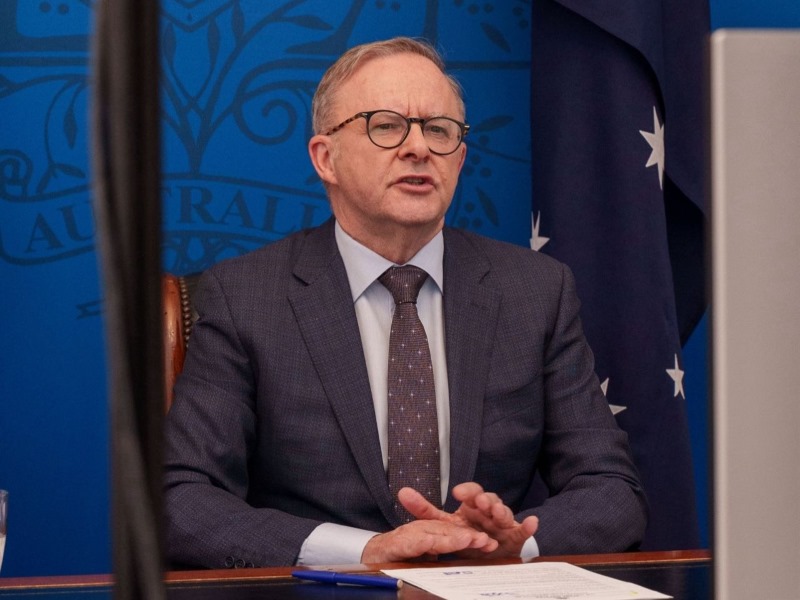The Albanese government’s response to global industrial competition like the US Inflation Reduction Act looks set to include a new multi-billion-dollar package of subsidies and co-investment for renewables an new industries.
In an address to regional businesses and innovators in the coal mining Hunter Valley on Friday evening, the Prime Minister will give the strongest signal yet that Australia’s response to the world’s green energy and manufacturing rush will be part of the upcoming Budget.

“Government has to be a partner in this, not just an observer,” Mr Albanese will say.
“You can see that in the unprecedented investments the United States and the EU and Japan and Korea are making in their industrial bases.
“We don’t have to go dollar-for-dollar in our spending. But we can go toe-to-toe on the quality and impact of our policies.”
Other countries have implemented huge subsidies and public investment in clean energy and strategically important industries to take advantage of decarbonisation and geopolitics.
Most notably in the US, the $566 billion Inflation Reduction Act includes $414 billion of tax incentives to drive renewable energy co-investment. Analysts have estimated it could create US$2.9 trillion of cumulative investment opportunity by 2032.
The Albanese government has implemented several multi-billion-dollar policies already in its first term, but most were planned years ago. The Australian funds have also been slow to reach the market and pale in comparisons to the US push, which has already acted as a magnet for some Australian operations.
Prominent investors, unions and clean energy organisations last year called for a $100 billion Australian response to Inflation Reduction Act, proposing an Australian Renewable Industry Package.
But the Albanese government has not announced any formal response yet, beyond an extension to its green hydrogen program in last year’s Budget and a commitment to underwrite renewable energy projects to help meet energy targets.
A more fulsome response to the IRA has been in the works since July through a 16-person taskforce led by the Department of Climate Change, Energy, Environment and Water (DCCEEW) that is working with officials in Treasury and the Industry department.
It had been asked to provide its analysis by the end of last year. But little was revealed in a major speech by Treasurer Jim Chalmers and the taskforce has continued.
On Friday, the Australian Financial Review reported a government source saying an upcoming budget multi-billion-dollar initiative will go beyond current policies like the $2 billion Hydrogen Headstart program and $15 billion National Reconstruction Fund.
Mr Albanese will hammer home the opportunity in the Hunter Valley on Friday night.
“Reliable and affordable clean energy, from solar to green hydrogen to offshore wind can power a new generation of advanced manufacturing and heavy industry, in our suburbs and our regional centres,” he will tell the Hunter Nexus dinner.
“In defence manufacturing, in the transport sector. In cement, ammonia, green steel and green aluminium. And – of course – if we can get this right, it’s not a closed loop.
“We can be an exporter of clean energy technology and clean energy itself. Helping our neighbours reduce their emissions and bolster their energy security.”
“There is a huge prize on offer here, across every sector of our economy and in every market in our region.”
The Clean Energy Council welcomed the news more strategic investment is being planned.
“Global clean energy capital is on the hunt for the most competitive markets in which to invest, and Australia will need to step up with a bold and far-reaching policy and funding package which can act as a magnet for new investment in a fiercely competitive global environment,” the group’s CEO Kane Thornton said.
Do you know more? Contact James Riley via Email.

